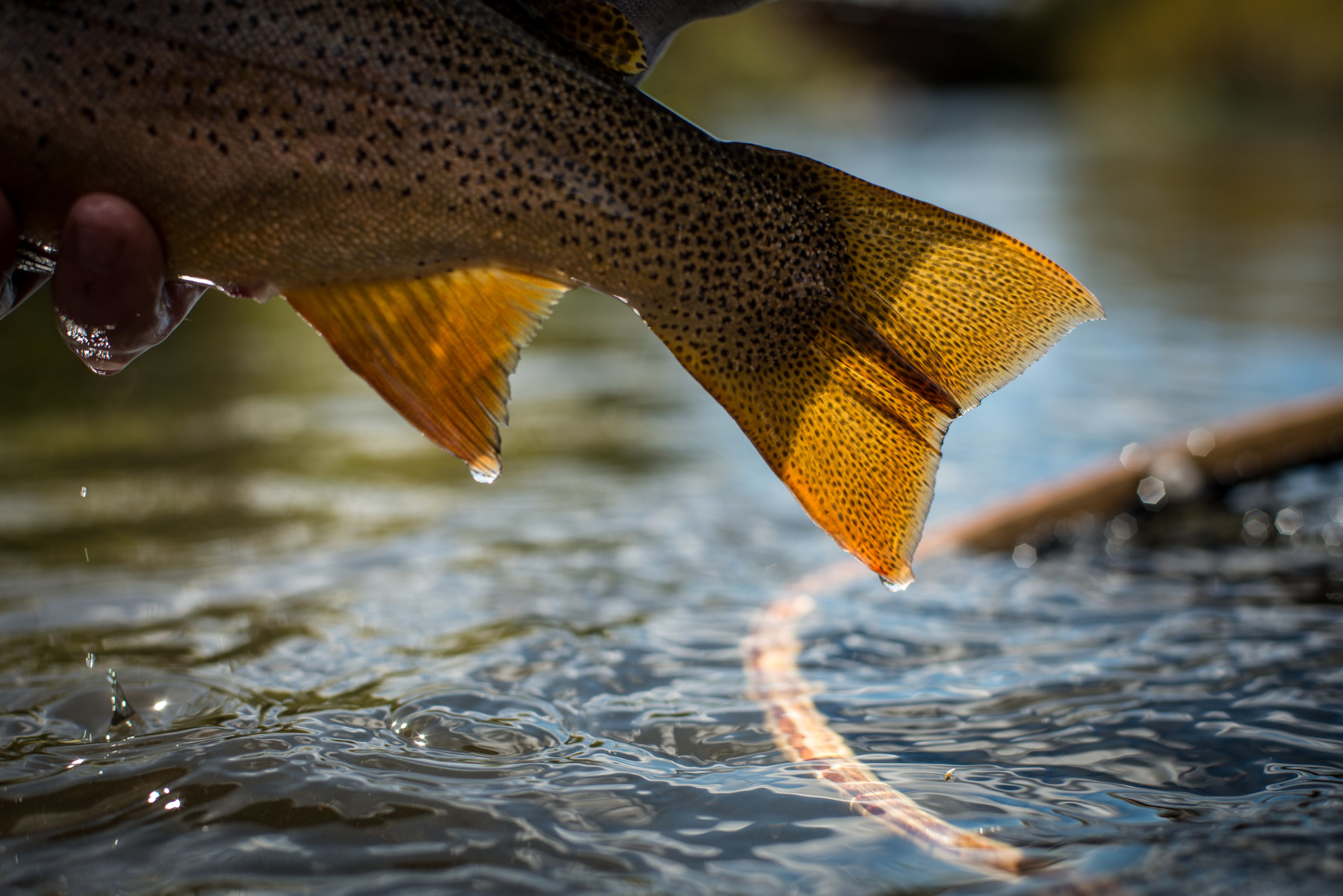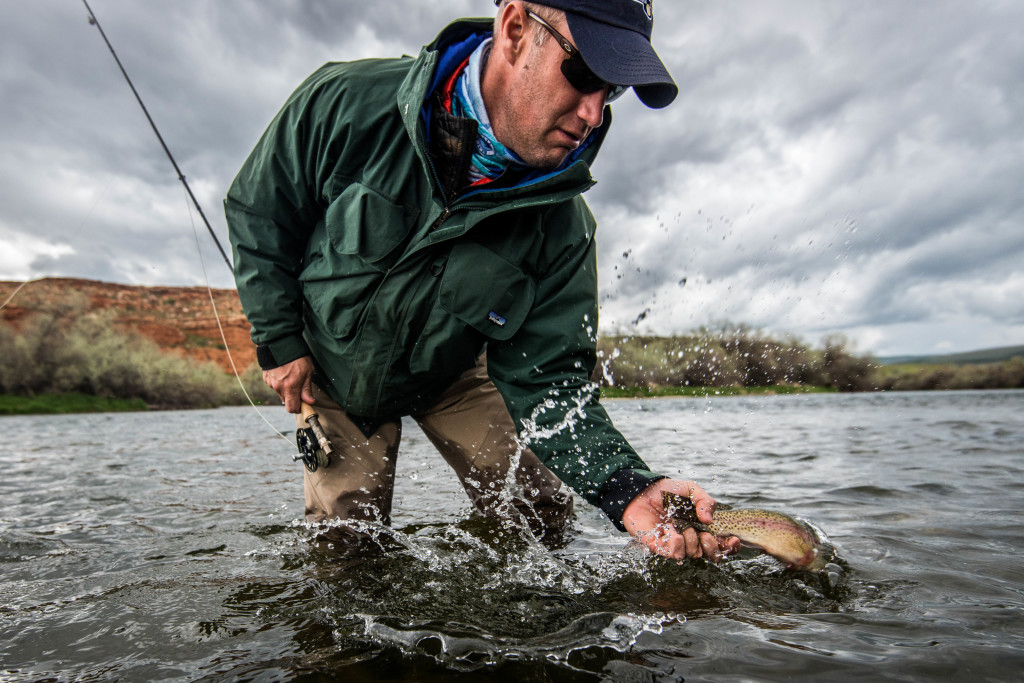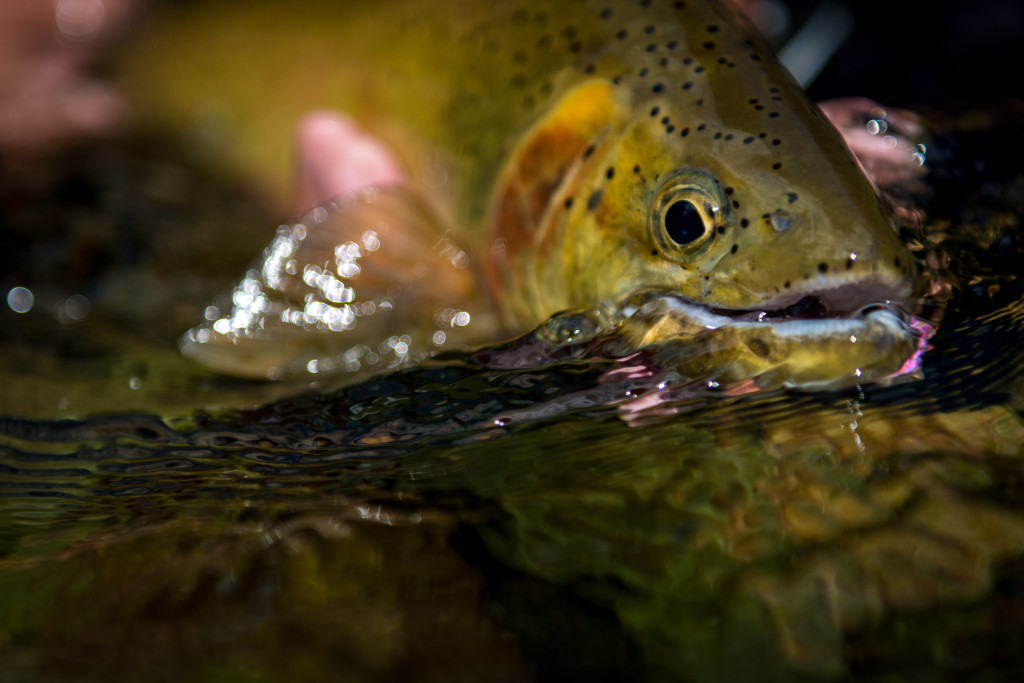5 Tips For Better Fish Photos (Behind The Lens Edition)

Matt recently shared some hard learned advice for how to get better fish photos when handling fish in front of the lens. Well, it takes two to tango, and the one holding the camera also has a lot to do with how the final product turns out. Here’s a handful of behind the lens tips to help you capture fishing images that do the fish, and your experiences, the justice they deserve.
Don’t take pictures of fish– Fish are gorgeous and photos of them can be too. But alone, they hardly scratch the surface when it comes to telling the story of fishing. In the last two months, I shot fishing images on 14 different occasions. I realized in reviewing the thousands of images which resulted that I only photographed one fish. Believe it or not it was not the only fish caught in my presence. All of the details, people, and activities that go into fishing provide great insight as to why we fish. Consequently, some of the most memorable fishing shots don’t have a fish in them at all.
Capture a piece of the action– Many of your classic grip and grin shots are static. Capture instead the moments that show the action and excitement of fishing. Fighting, netting, and releasing fish; high-fiveing a buddy; the look of dejection after losing a good one – all of these actions are full of emotion that will come through in your images and get at the heart of what makes fishing great. In addition to high action, look for some of the more reflective moments or subtle details, such as an angler reading the water in the early morning, or retying a rig.
 Good Light– True of pretty much all photos, good light is often the difference between a good image and a great image. Fish pictures are no exception. Early morning and evening light give the incredible colors and details of fish a chance to shine. Try backlighting a fin by framing the sun behind your catch, or capturing reflections off the water to add an extra dimension to your shot.
Good Light– True of pretty much all photos, good light is often the difference between a good image and a great image. Fish pictures are no exception. Early morning and evening light give the incredible colors and details of fish a chance to shine. Try backlighting a fin by framing the sun behind your catch, or capturing reflections off the water to add an extra dimension to your shot.
Focus on the eye– What qualifies as a good photo is subjective in many ways, and nearly every so called rule is made to be broken. But with that said, when there’s a fish eye in my frame, I always want it to be in focus. We are drawn naturally eyes. I often shoot with a shallow depth of field to highlight certain parts of the fish. Even then though, I want the eye to be tack sharp. In general, when the eye is out of focus, the image doesn’t makes the cut.
Go wide or tight– Folks commonly take hero shots at a medium distance, framing both the entire person and the fish. Consider abandoning that middle of the road approach next time, and go wide or tight instead. Wide shots, where the fish is often just a small element of the whole picture, can be great for conveying the beauty or feel of the environment where you are fishing. Fish, after all, rarely live in ugly places. Conversely, shoot up close or tight. The gill plates, eyes, fins, and markings of fish are all worthy of dedicated attention, so go ahead and get up close and personal.



Fantastic tips. I completely agree that the most boring parts of fly fishing photography, as well as its writing, is usually the fishing itself. You do a wonderful job here at STS in that regard; bringing the backstories to light.
My personal takeaway from this piece, though, is capturing the “Wide shots, where the fish is often just a small element of the whole picture…” The best of both worlds.
THANKS!
Mike, that’s a great compliment, thanks so much! For some reason I’ve always been drawn to shooting wide and I have to work at shooting medium and tight.